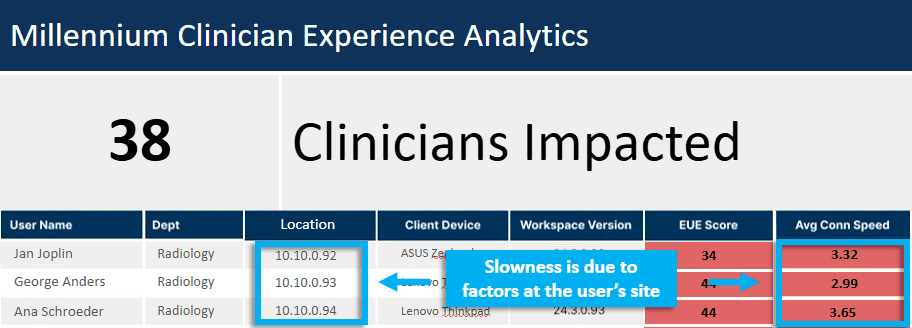Improve Oracle EHR Physician Experience and Reduce MTTR
By Cory Crawford, 14 years as a Lead Integration Architect with Oracle Health
Throughout my 14-year career at both Cerner and Oracle Health, I’ve spent countless hours on the phone with the Oracle Health IRC (Immediate Response Center). Typically, an end user reports an issue with minimal details, expecting a swift resolution. While numerous tools exist to assist in troubleshooting, logging into multiple systems to gather scattered data points is both tedious and time-consuming.
During a demo with Goliath, I immediately recognized the value of having an all-in-one solution. From accelerating initial triage to reducing overall resolution time, Goliath streamlines the troubleshooting process in a way that traditional methods simply can’t match.
Faster Triage, Quicker Mean Time to Resolution
When you call the IRC, a Situation Manager is your first point of contact. Their role is to assess the issue and connect you with the right resource to resolve it.
With Goliath’s comprehensive data insights, you can provide precise, real-time information, allowing the Situation Manager to immediately page the appropriate team. This eliminates the common frustration of waiting for a resource to join the call – only for them to say, “This isn’t me; you need to page another team.”
The Goliath Solution is unique due to the partnership they maintain with Oracle Health Hosted which allows them to deploy their technology into the hosted environment. This gives them access to data regarding end user clinician experience that is not available through other means. The technical reasoning for this deployment architecture and why it is wholly complimentary to Lights On Network will be explained in a future post or on the next webinar.
Given the complexity of healthcare IT and the vast number of teams and subject matter experts (SMEs) at Oracle Health, having instant access to key metrics significantly improves both initial triage and overall troubleshooting.
My Personal Experience Managing a Client Crisis
When put to use, Goliath’s Technology immediately gives end-to-end visibility from multiple Oracle Health domains to on-premises issues, all the way to the clinician’s experience at their devices. For the first time, we could quickly determine whether the issue was client side or vendor side and approach the IRC with a common set of facts. We could stop pointing fingers and build a resolution plan.
I can recall one situation where we were informed of massive slowness issues and we were engaged along with other members of the Oracle team, health system IT department, and multiple vendors. Fortunately, we were able to run reports from Goliath on demand to help us frame up the problems. Again, the tension was high because of all the complaints that had been registered.
What we found was a more manageable situation. The clinician experience issues had been greatly amplified. That “over amplification” was not unusual but in this case, we were able to prove, as seen in the image below that the complaints were not from hundreds of clinicians but a few dozen and further, they were all from one location.
With that knowledge, we were able to drill down into historical and real time data to confirm that the issues were connection speed related caused by problems with Citrix receiver versions, improperly patched routers, and downed Wi-Fi devices. Easy to fix, but impossible to find without Goliath.
We want to fix issues no matter the root cause so clinicians can provide seamless patient care without having to overcome technical challenges. Goliath is able to deploy their technology on both the Oracle and Healthcare infrastructures so complete visibility is now achievable and consequently troubleshooting is made not only easier, but possible, which sometimes is not the case without full end-to-end visibility.
Real-Time Insights for Proactive Issue Resolution
By leveraging Goliath, you’re not just resolving issues more efficiently, you’re transforming how healthcare IT teams approach troubleshooting and system stability.
If you are having end user experience issues with your clinical or business applications, reach out and let’s discuss. We find and fix very specific issues and in a discovery conversation we will let you know if we can assist. If the issues you are experiencing are outside our purview, we will share that as well. Learn more about our EHR Speed & Reliability Improvement Program.

